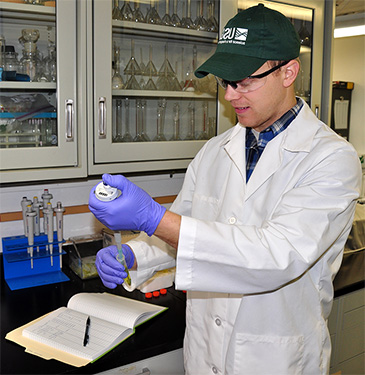Sea Lamprey Research
Purpose of Program
Generate and make accessible a portfolio of science to further the integrated control of sea lampreys, including the development of novel, effective strategies.
Program Scope

The Sea Lamprey Research Program consists of a portfolio of funded basic (discovery, descriptive, or hypothesis generation) and applied (descriptive or hypothesis-driven) research organized by theme areas given below. Projects are solicited from the Great Lakes research community and a competitive, peer-reviewed process, led by the Sea Lamprey Research Board (SLRB), ensures a high-quality program of science.
Theme Areas
Research theme areas describe important topics related to the control of sea lampreys in the Great Lakes and are led by the SLRB. The SLRB encourages crosscutting proposals that integrate two or more research concepts as described in the synthesis papers below. Examples of crosscuttingconcepts are provided in the program’s conceptual diagram. Investigators are encouraged to use these examples as inspiration to develop research project ideas, but proposals must be submitted under one of the research theme areas below. Projects that do not fall under a current theme area may be supported under "non-theme" research. Investigators with ideas for new theme areas shouldas for new theme areas should contact the Science Director.
Investigators should also use the Sea Lamprey Control Board Research Priorities to develop research ideas. The research priorities are identified by the SLCB as critical research needs to understand and improve the control of sea lamprey. Investigators shoulddetermine and communicate how their proposed project will address theresearch priorities.
- Barriers and Trapping
- Lampricides
- Assessment
- Chemosensory Communication Systems
- Genetic Control of Sea Lamprey
Research synthesis papers
The research synthesis papers were developed to outline additional scientific discipline around sea lamprey research. Investigators are encouraged to use these papers to explore emerging technologies to further controltactics of sea lamprey.
- Behavioral ecology (coming soon)
- Chemosensory communication
- Experimental control methods
- Genetics
- Physiology
- Population ecology
- Toxicology
Third Sea Lamprey International Symposium
The third Sea Lamprey International Symposium (SLIS III) was held from 28 July to 2 August 2019 at Wayne State University in Detroit, MI USA, and brought lamprey experts from around the world together to discuss issues common to the control of sea lamprey in the Laurentian Great Lakes and the conservation of lampreys in their native ranges across the globe. SLIS III follows the second Sea Lamprey International Symposium (SLIS II), held nearly 20 years ago, and the original Sea Lamprey International Symposium held 20 years before that. The goals of the SLIS III proceedings are to update lamprey research since SLIS II, to bring lamprey researchers to a common plateau of understanding about lamprey biology through the exchange of knowledge and ideas, and to develop new imaginative initiatives and stimulate new vigor in the control of sea lampreys and conservation of native lampreys. The proceedings were planned and organized into four topical themes: (i) History of Sea Lamprey Control and International Sea Lamprey Symposia; (ii) Comparative Lamprey Biology: Conservation and Management; (iii) Advances in Sea Lamprey Control in the Great Lakes; (iv) Advances in Sea Lamprey Biology; and (v) Emerging Opportunities - From Advances to Control and Conservation.
The full proceedings can be accessed through the Journal of Great Lakes Research at https://www.sciencedirect.com/journal/journal-of-great-lakes-research/vol/47/suppl/S1
Apply for Funding
Check out the Funding for Research page for more information on how to apply, types of funding offered, and the annual funding cycle.

